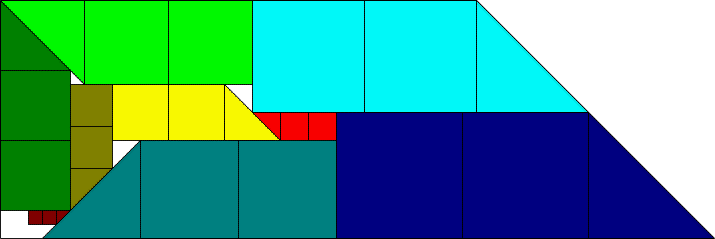
The smallest values of n for which s(n) is not known are n = 26, 28, 32, 33, 34, 38, and 40. It is barely possible that s(26)=79, s(28)=88, and s(40)=149. These were thought to be impossible until the s(37)=133 packing was found. Can you find one of these packings? It is known that s(32)≤108, s(33)≤113, s(34)≤118, and s(38)≤139, and because the amount of wasted space is so small, these are believed to be optimal, but they might be 1 smaller. Can you prove these?
This month's problem is to consider the same packing problem for other shapes: Given a shape P find its packing sequence, in which the nth term is the smallest magnification of P that contains copies of size 1 through n of P. For example, the domino seems to have packing sequence 1, 3, 4, 6, 8, 10, 12, 15, 18, 20, 23, .... Can you verify or extend this sequence? What about the packing sequences of other small polyominoes? What about equilateral triangles? What about other triangles?
I'll give $10 to the first person who finds a shape with s(9) = 17.
Bill Clagett gave the sequences for the 2×3, 2×5, and 3×5 rectangles, as well as correcting a few of my sequences.
Maurizio Morandi extended several sequences.
Berend van der Zwaag sent solutions for the 3×4 rectangle. And he collected the $10 prize in 2011 for the packing below:

Here are the best known values of the packing sequences of various shapes, in lexigraphical order:
| Shape | 1 | 2 | 3 | 4 | 5 | 6 | 7 | 8 | 9 | 10 | 11 | 12 | 13 | 14 | 15 | 16 | 17 | 18 | 19 | 20 | 21 | 22 | 23 | 24 | 25 | |||||||||||||||||||||||||||||||||||||||||||||||||||||||||||||||||||||||||||||||||||||||||||||||||||||||||||||||||||||||||||||||||||||||||||||||||||||||||||||||||||||||||||||||||||||||||||||||||||||||||||||||||||||||||||||||||||||||||||||||||||||||||||||||||||||||||||||||||||||||||||||||||||||||||||||||||||||||||||||||||||||||||||||||||||||||||||||||||||||||||||||||||||||||||||||||||||||||||
|---|---|---|---|---|---|---|---|---|---|---|---|---|---|---|---|---|---|---|---|---|---|---|---|---|---|---|---|---|---|---|---|---|---|---|---|---|---|---|---|---|---|---|---|---|---|---|---|---|---|---|---|---|---|---|---|---|---|---|---|---|---|---|---|---|---|---|---|---|---|---|---|---|---|---|---|---|---|---|---|---|---|---|---|---|---|---|---|---|---|---|---|---|---|---|---|---|---|---|---|---|---|---|---|---|---|---|---|---|---|---|---|---|---|---|---|---|---|---|---|---|---|---|---|---|---|---|---|---|---|---|---|---|---|---|---|---|---|---|---|---|---|---|---|---|---|---|---|---|---|---|---|---|---|---|---|---|---|---|---|---|---|---|---|---|---|---|---|---|---|---|---|---|---|---|---|---|---|---|---|---|---|---|---|---|---|---|---|---|---|---|---|---|---|---|---|---|---|---|---|---|---|---|---|---|---|---|---|---|---|---|---|---|---|---|---|---|---|---|---|---|---|---|---|---|---|---|---|---|---|---|---|---|---|---|---|---|---|---|---|---|---|---|---|---|---|---|---|---|---|---|---|---|---|---|---|---|---|---|---|---|---|---|---|---|---|---|---|---|---|---|---|---|---|---|---|---|---|---|---|---|---|---|---|---|---|---|---|---|---|---|---|---|---|---|---|---|---|---|---|---|---|---|---|---|---|---|---|---|---|---|---|---|---|---|---|---|---|---|---|---|---|---|---|---|---|---|---|---|---|---|---|---|---|---|---|---|---|---|---|---|---|---|---|---|---|---|---|---|---|---|---|---|---|---|---|---|---|---|---|---|---|---|---|---|---|---|---|---|---|---|---|---|---|---|---|---|---|---|---|---|---|---|---|---|---|---|---|---|---|---|---|---|---|---|---|---|---|---|---|---|---|---|---|---|---|---|---|---|---|---|---|---|---|---|---|---|---|---|
 | 1 | 3 | 4 | 6 | 8 | 10 | 12 | 15 | 18 | 20 | 23 | 26 | 29 | 32 | 36 | 39 | 43 | 47 | 50 | 54 | 58 | 62 | 66 | 71 | 75
 1 | 3 | 4 | 6 | 8 | 10 | 12 | 15 | 18 | 20 | 23 | 26 | 29 | 33 | 36 | 39 | 43 | 47 | 50 | 54 | 58 | 62 | 66 | 71 | 75
|  1 | 3 | 5 | 6 | 8 | 10 | 13 | 15 | 18 | 20 | 23 | 26 | 29 | 33 | 36 | 39 | 43 | 47 | 50 | 54 | 58 | 62 | 66 | 71 | 75
|  1 | 3 | 5 | 6 | 8 | 10 | 13 | 15 | 18 | 21 | 24 | 26
|  1 | 3 | 5 | 6 | 8 | 11 | 13 | 15 | 18 | 20 | 23 | 26 | 29 | 32 | 36 | 39 | 43 | 47 | 50 | 54 | 58 | 62 | 66 | 71 | 75
|  1 | 3 | 5 | 7 | 9 | 11 | 13 | 15 | 18 | 21 | 23 | 27 | 30 | 33 | 36 | 39 | 43 | 47 | 50 | 54 | 58 | 62 | 66 | 71 | 75
|  1 | 3 | 5 | 7 | 9 | 11 | 13 | 15 | 18 | 21 | 24 | 26 | 30 | 33 | 36 | 39 | 43 | 47 | 50 | 54 | 58 | 62 | 66 | 71 | 75
|  1 | 3 | 5 | 7 | 9 | 11 | 13 | 15 | 18 | 21 | 24 | 27 | 30 | 33 | 36 | 39 | 43 | 47 | 50 | 54 | 58 | 62 | 66 | 71 | 75
|  1 | 3 | 5 | 7 | 9 | 11 | 13 | 15 | 18 | 21 | 24 | 27 | 30 | 33 | 36 | 39 | 43 | 47 | 50 | 54 | 58 | 62 | 66 | 71 | 75
|  1 | 3 | 5 | 7 | 9 | 11 | 13 | 15 | 18 | 21 | 24 | 27 | 30 | 33 | 36 | 39 | 43 | 47 | 50 | 54 | 58 | 62 | 66 | 71 | 75
|  1 | 3 | 5 | 7 | 9 | 11 | 13 | 15 | 18 | 21 | 24 | 27 | 30 | 33
|  1 | 3 | 5 | 7 | 9 | 11 | 13 | 15 | 18 | 21 | 24 | 27 | 30
|  1 | 3 | 5 | 7 | 9 | 11 | 13 | 16 | 18 | 21 | 24 | 27
|  1 | 3 | 5 | 7 | 9 | 12 | 14 | 16 | 19 | 22 | 25
|  1 | 3 | 5 | 7 | 9 | 12 | 14 | 16 | 22
|  1 | 3 | 5 | 7 | 9 | 12 | 14 | 16 | 19 | 22
|  1 | 3 | 5 | 7 | 9 | 12 | 15 | 18 | 21 | 24 | 27 | 30 | 33 | 36
|  1 | 3 | 5 | 8 | 10 | 12 | 14 | 16 | 19 | 22
|  1 | 3 | 6 | 8 | 10 | 12 | 15 | 18 | 21 | 24 | 27
|  1 | 3 | 6 | 8 | 10 | 12 | 15 | 18 | 21 | 24 | 27
|  1 | 3 | 6 | 8 | 10 | 12 | 15 | 18 | 21 | 24
|  1 | 4 | 6 | 8 | 10 | 12 | 14 | 17 | 19 | 22
|  1 | 4 | 6 | 8 | 10 | 12 | 15 | 18 | 21 | 24
|  1 | 4 | 6 | 9 | 12 | 15 | 18 | 21 | 24 | 27 | 30 | 33
| |








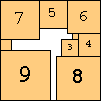
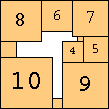
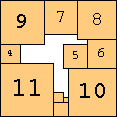
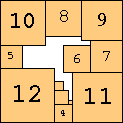
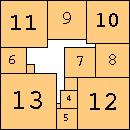
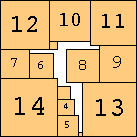
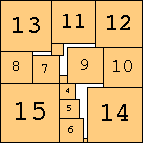
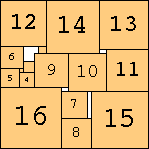
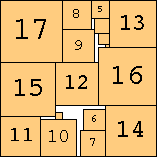

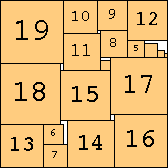
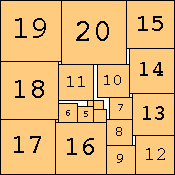
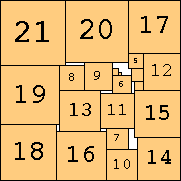
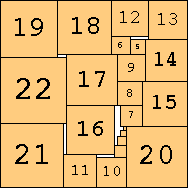
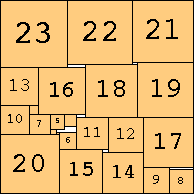
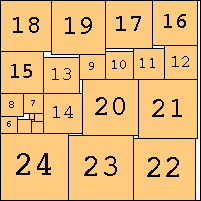
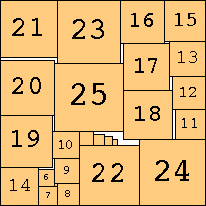
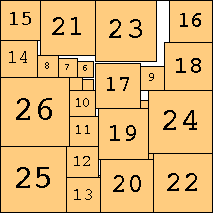

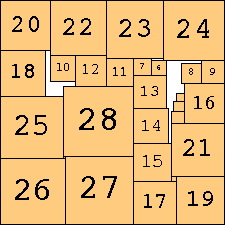
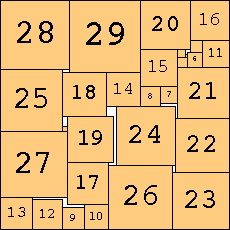
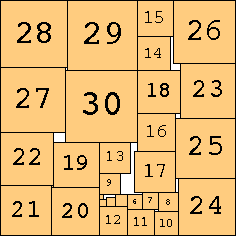
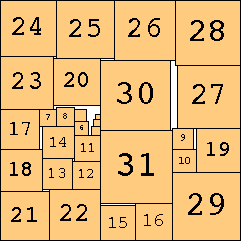
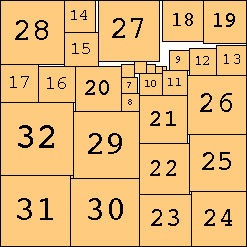
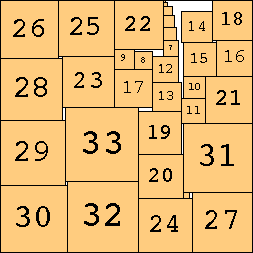
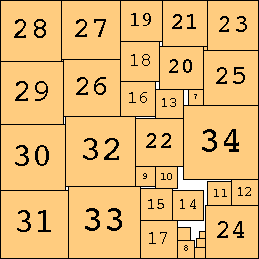
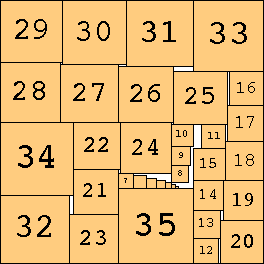
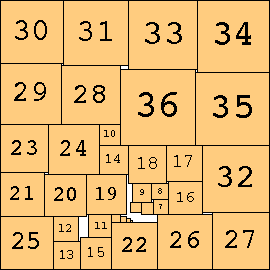
And here are the best known packings for dominoes that are better:








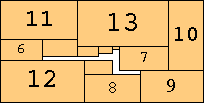
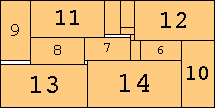
| Shape | 1 | 2 | 3 | 4 | 5 | 6 | 7 | 8 | 9 | 10 | 11 | 12 | 13 | 14 | 15 | 16 | 17 | 18 | 19 | 20 | 21 | 22 | 23 | 24 | 25 |
|---|---|---|---|---|---|---|---|---|---|---|---|---|---|---|---|---|---|---|---|---|---|---|---|---|---|
 | 1 | 5/2 | 4 | 6 | 8 | 10 | 12 | 15 | 35/2 | 20 | 23 | 26 | 29 | 32 | 36 | 39 | 43 | 93/2 | 50 | 54 | 58 | 62 | 66 | 141/2 | 75 |
 | 1 | 13/5 | 21/5 | 6 | 8 | 10 | 63/5 | 15 | 86/5 | 20 | 23 | 26 | 29 | 97/3 | 179/5 | 39 | 214/5 | 139/3 | 50 | 54 | 58 | 62 | 66 | 71 | 75 |
 | 1 | 8/3 | 4 | 6 | 8 | 10 | 12 | 15 | 52/3 | 20 | 23 | 26 | 29 | 129/4 | 143/4 | 39 | 171/4 | 139/3 | 50 | 54 | 58 | 62 | 66 | 71 | 75 |
 | 1 | 8/3 | 13/3 | 6 | 8 | 31/3 | 38/3 | 15 | 35/2 | 20 | 23 | 26 | 29 | 32 | 107/3 | 39 | 128/3 | 93/2 | 50 | 54 | 58 | 62 | 66 | 71 | 75 |
 | 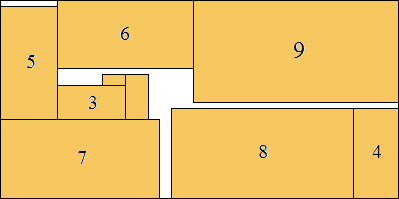
|
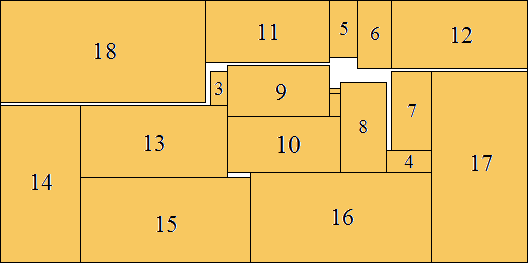 | 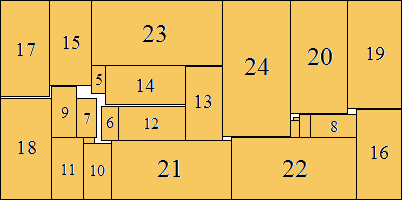
|
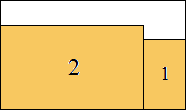 | 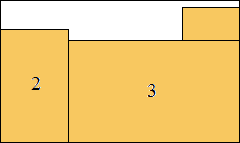 | 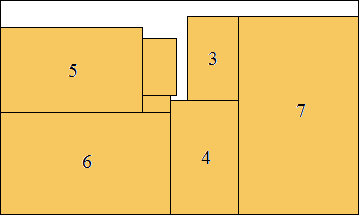
|
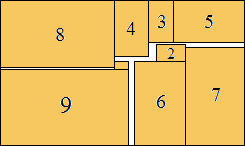 | 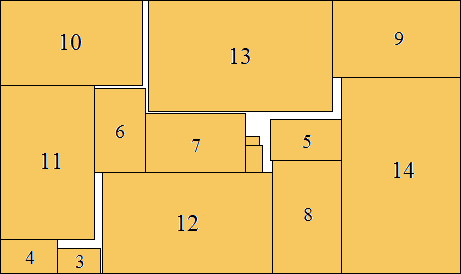
|
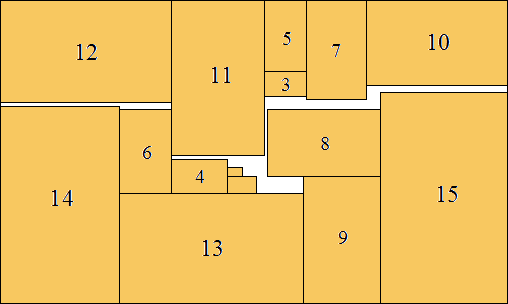 | 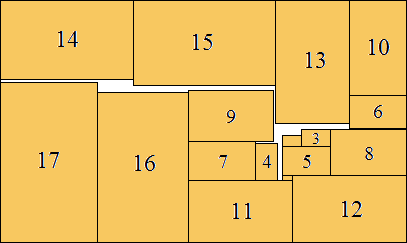
|
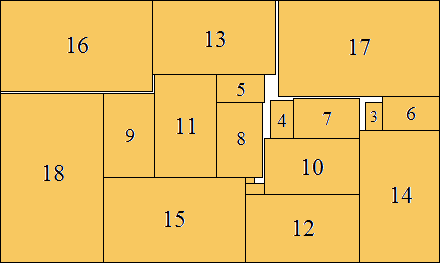
|
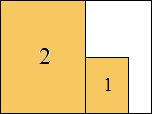 | 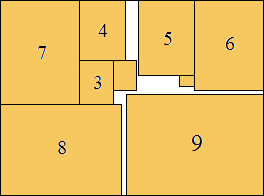
| 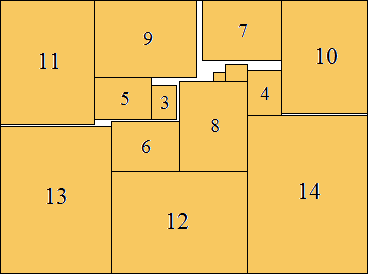
|
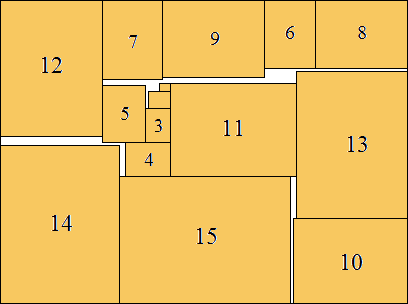 | 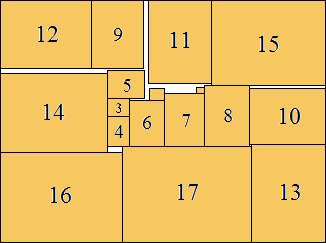
|

|
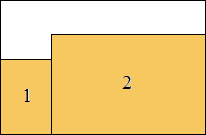 |  |  | 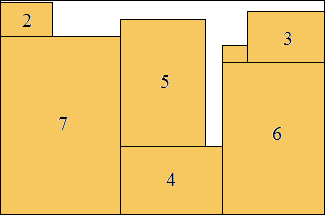
|

| 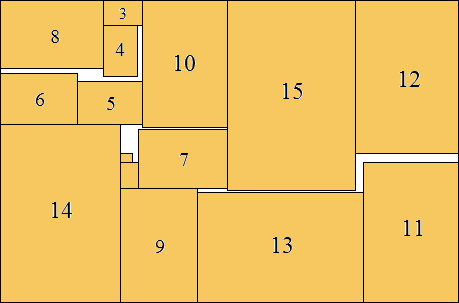
|
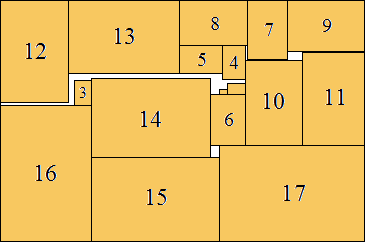 | 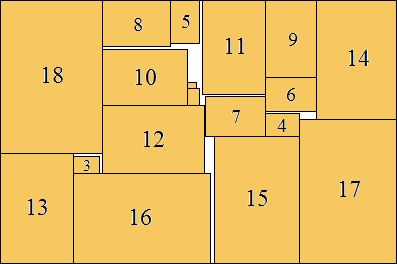
|
If you can extend any of these results, please e-mail me. Click here to go back to Math Magic. Last updated 6/5/15.